1969
Before the Internet became a worldwide network, it existed as an intranet between the University of Utah and three research centers in California. Called ARPANET, the project was commissioned by the Advanced Research Projects Agency in 1969 as a means of testing the newly-developed packet-switching data communications and developing a more practical use for expensive computing equipment.

1970
Within one year, ARPANET had expanded to 13 nodes, including Harvard, MIT, Carnegie Mellon, and the engineering consulting firm Bolt, Bernak, and Newman (BBN). Each ARPANET node owned an $82,200 router known as the Interface Message Processor. After adjusting for inflation, each device would’ve been worth over a million USD.

1973
By 1973, ARPANET was internationally linked to Norway and England, as well an increasing number of nodes within the United States. New ARPANET applications began to emerge, including email and the File Transfer Protocol (FTP)—a standard still in use today.

1982
By the time it entered its second decade, ARPANET expanded to about 100 nodes and an online community began to take shape. Growth is slow and steady, as academic institutions continue relying on federal funding to join the network. Early users set up Usenet, the first online bulletin board, as a means of exchanging ideas.
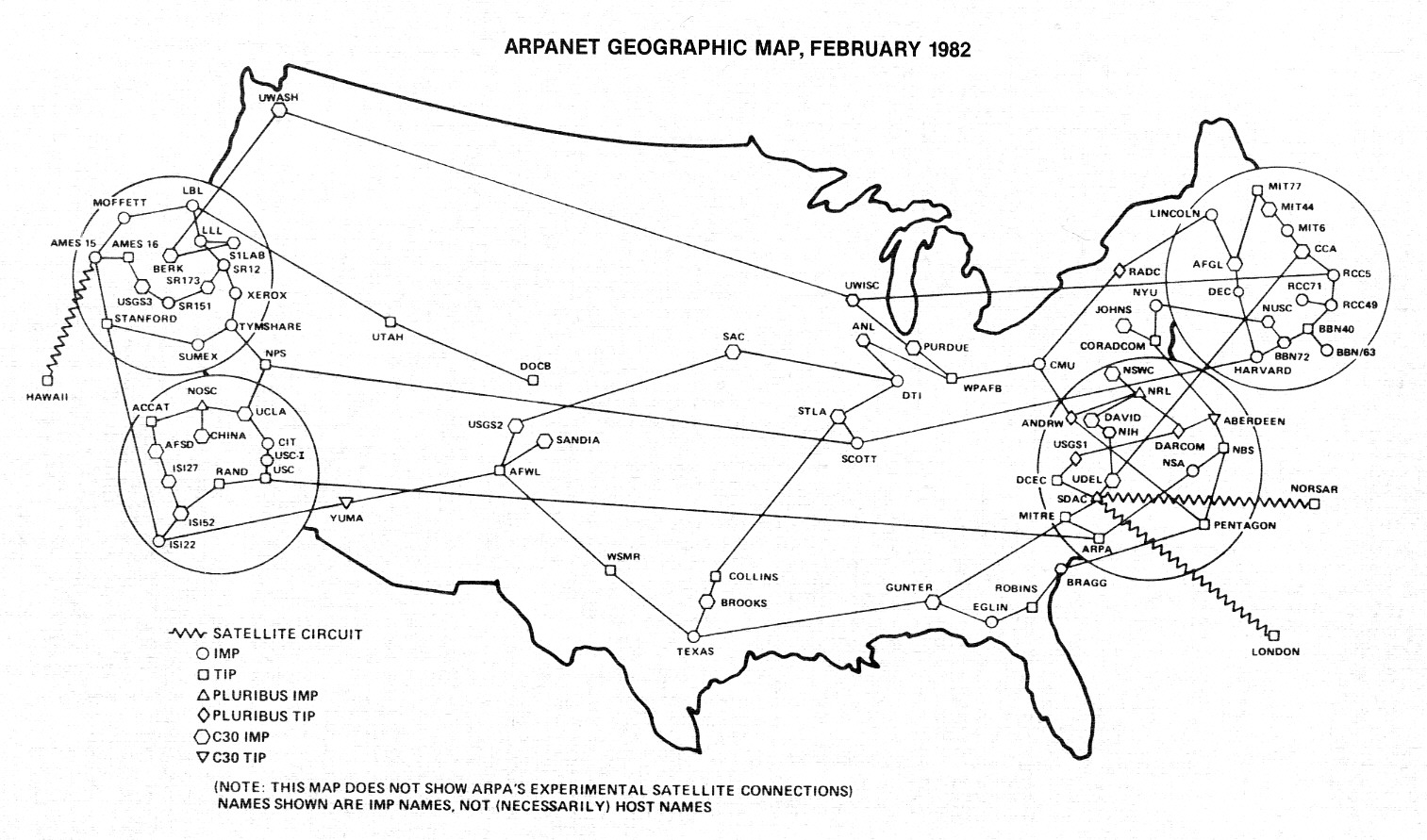
1983-1984, TCP/IP
On January 1, 1983, ARPANET officially switched to using the TCP/IP protocol developed by computer scientists Robert Kahn and Vint Cerf, transitioning from a centralized military network to a decentralized network of networks. Under the new arrangement, different networks would be controlled by different organizations while retaining an overarching interconnectedness thanks to shared standards. The first new network created as a result of the updated standards was CSNET, a network founded by the National Science Foundation (NSF) to link computer science departments nationwide.
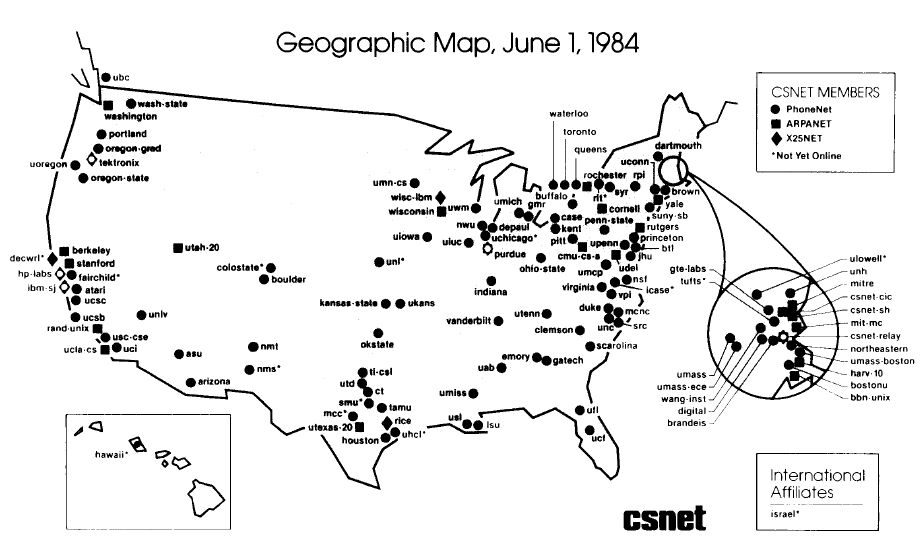
1992, NSFNET
Seeking to expand on what it began in 1984, the NSF created NSFNET, a TCP/IP-based network that could link several supercomputing centers around the United States and allow scientists to remotely tap in and perform academic research. Eventually, the agency decided to expand the scope of NSFNET, allowing universities to use it for a variety of academic purposes. The decision to publically open up the network had far-reaching consequences, establishing NSFNET as the “backbone” of the Internet, thereby bridging long distances with high-speed communications. Schools unable to directly connect to the NSFNET teamed up to build regional networks that linked them together, as well as to the nearest NSF node.
By 1992, there were over 6,000 networks connected to NSFNET, a third of which are located outside of the United States. And while NSFNET was originally intended to non-commercial, the number of for-profit companies began increasing, setting the foundation for the eventual commercialization of the Internet that followed.
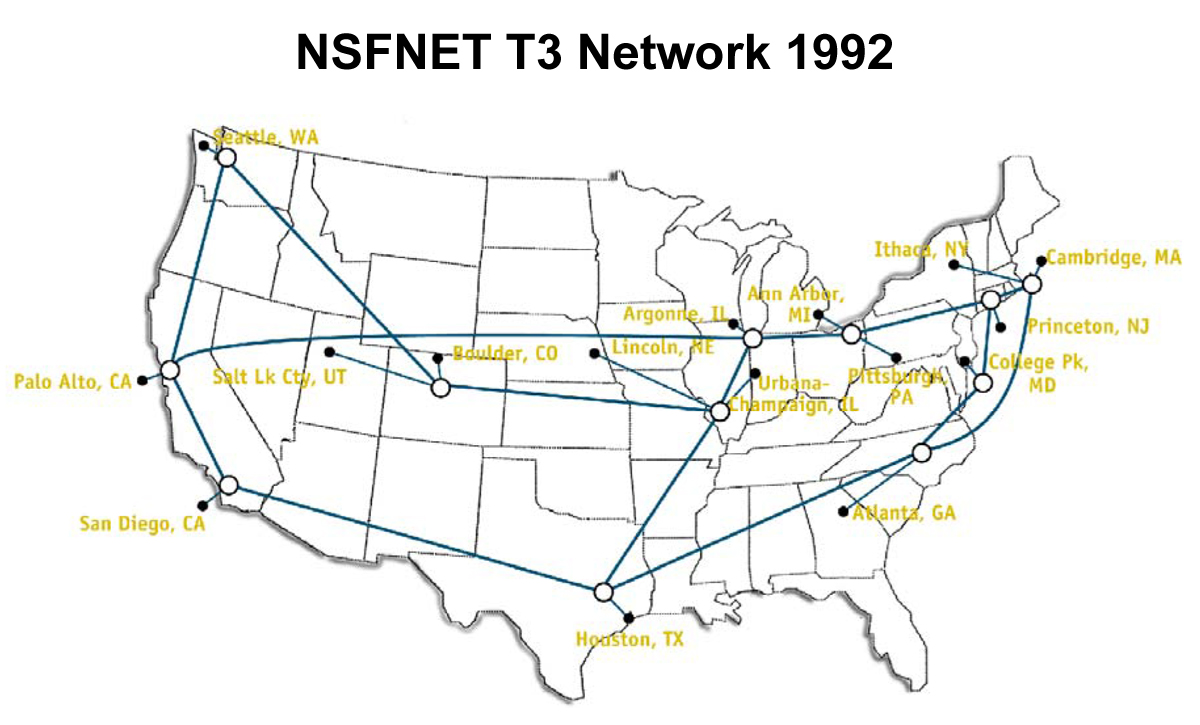
1993, The Internet becomes global
While the Internet remained largely concentrated in the United States in 1993, it slowly but surely began expanding to increasing number of countries. The image below depicts global traffic to Usenet.
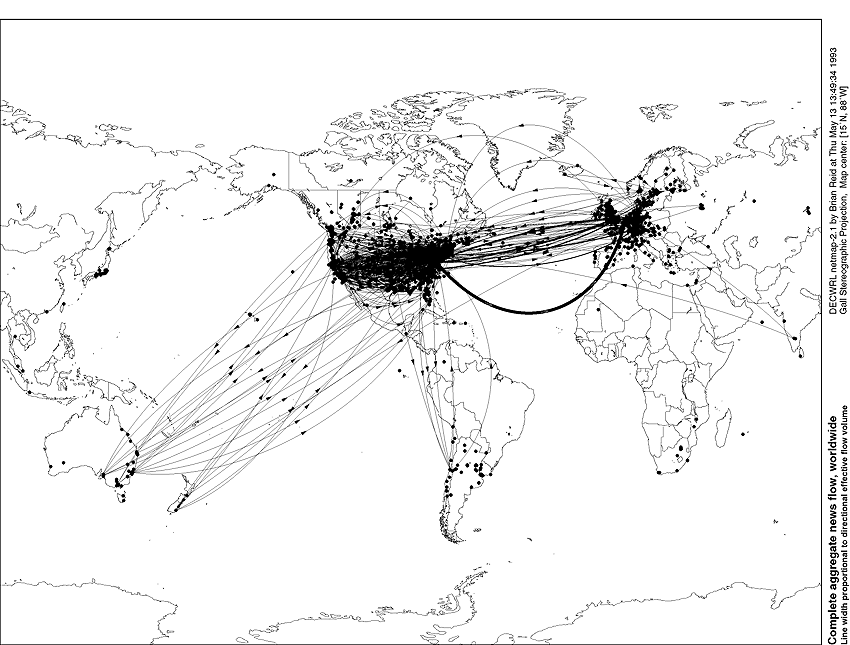
1994, Privatization ensues
One year later, government regulation privatized the Internet backbone, permitting commercial firms to assume the role of delivering long-distance Internet communications. Careful wording of the legislation ensured a competitive market and avoided monopolizing Internet connectivity under the umbrella of a single company. Four of the largest long-distance network providers to arise at this time were UUNet, AT&T, Sprint, and Level 3; NSFNET was decommissioned.

2000, The Internet spreads like wildfire
Nearly half of United States’ population was online by the year 2000, but the total number worldwide Internet users fell to fewer than 400 million. The image below demonstrates how the service spread to wealthy countries, middle-income countries, and eventually poor countries. By 2016, there are approximately 3.3 billion Internet users throughout the globe, representing 40% of the entire human population.

2012, Fixed broadband penetration
At this point, the Internet is accessed through either fixed broadband connection or wireless connections on a smartphone or tablet. Data from the International Telecommunications Union demonstrates that fixed broadband continues to be the most popular option, and while access has spread to most of the world, access in certain regions such as sub-Saharan African and the Middle East remains scarce. In the developed world, users typically obtained fixed Internet before obtaining the service on their mobile devices.

2012, Mobile broadband penetration
Contrary to the previous point, many developing nations began bypassing the construction of a fixed Internet infrastructure in 2012, moving directly into wireless networks. This is a very cost-effective strategy in instances where a single hotspot can provide service hundreds of customers at once. For example, 2.7 percent of Egyptians owned fixed Internet in 2012, but nearly ten times as many obtained the service using a cell phone.
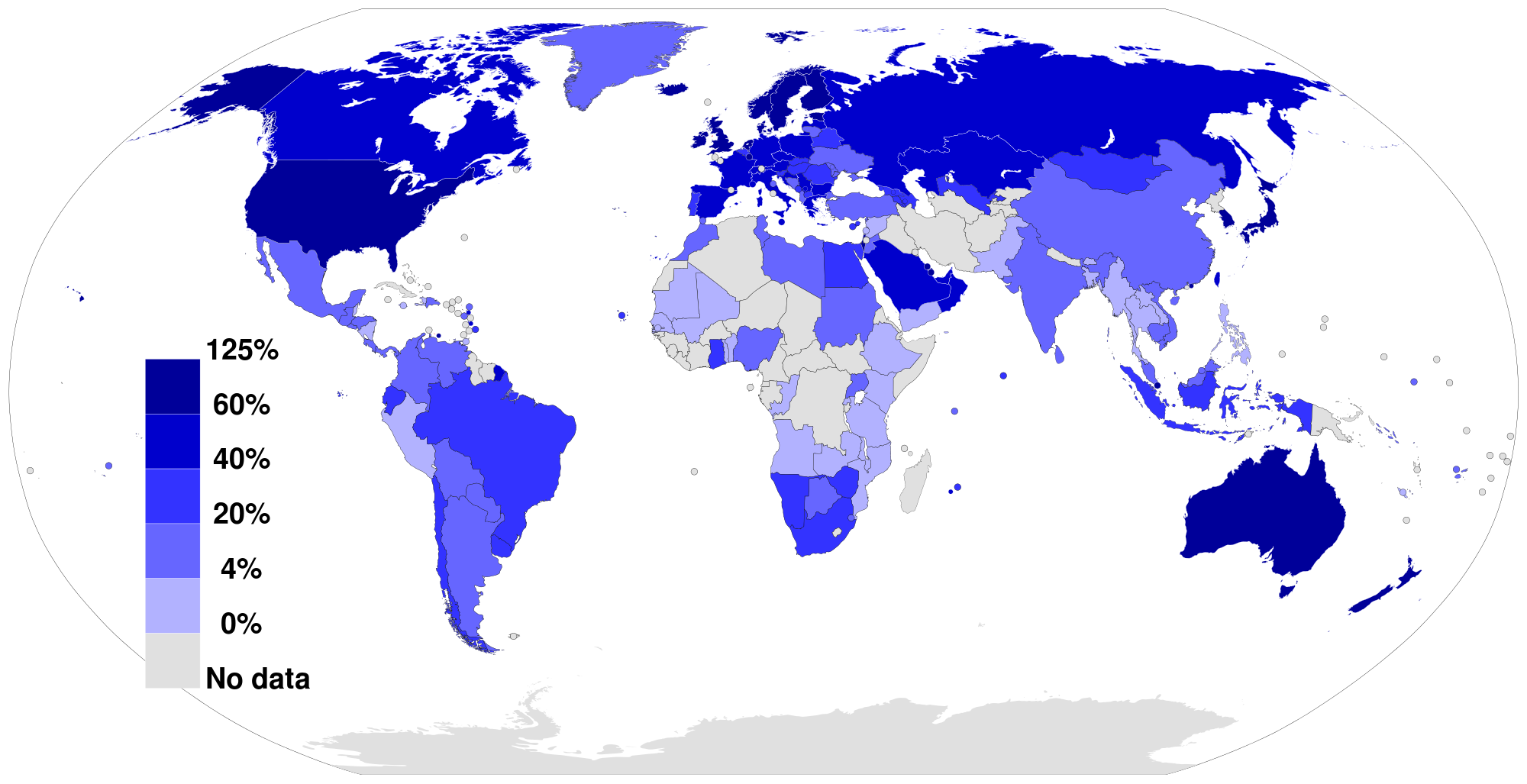
2014, Broadband speed grows exponentially
Internet speeds are not equally divided. Nations begin heavily investing into their Internet speed, with the average rate drastically varying between countries. According to Wikipedia , the fastest Internet in the world is South Korea with 26.7 Mb/s, followed by Sweden, Norway, Japan, and the Netherlands. The United States doesn’t appear until the 14th slot.
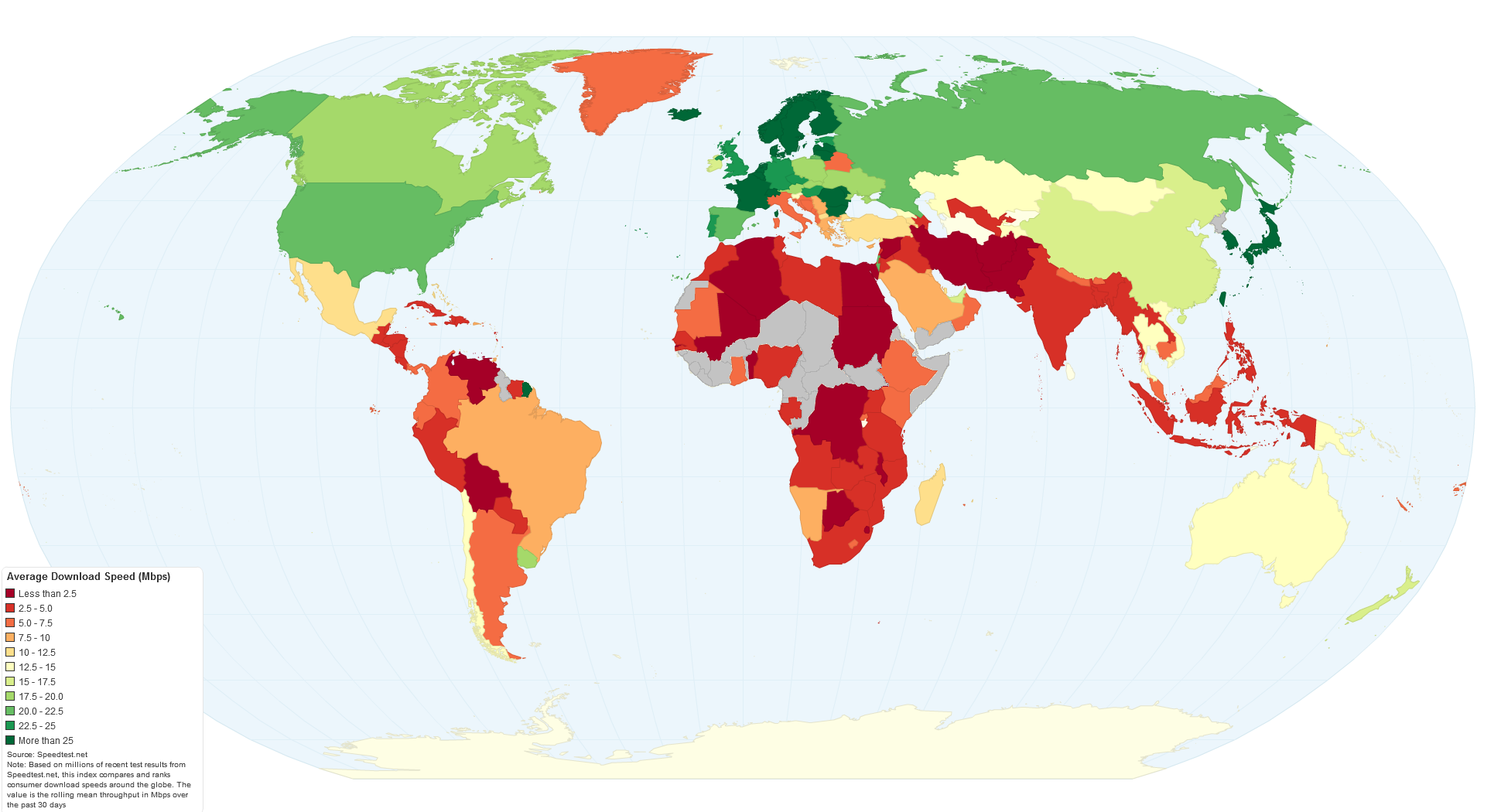
2016, IPv6 integration grows
Internet Protocol (IP) addresses are the language used by computers to navigate and route traffic across the Internet. Until very recently, the Internet was coordinated into five zones, each assigned with hundreds of millions of IP addresses to manage, out of a total of about four billion addresses. Given that every device on the Internet is assigned an IP address, experts anticipated that the supply of available IP addresses would eventually be exhausted. In response, experts created an updated version of IPv4, called IPv6, which offers an inexhaustible supply. As of June 6th , 2016, the total number of users reaching Google services with IPv6 has reached approximately 9.92%. In 2014, this figure measured approximately 3%.

Advertisement
Learn more about Electronic Products Magazine





